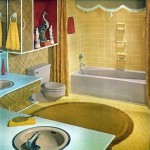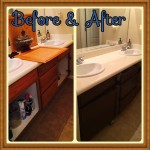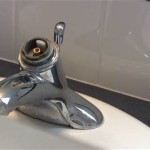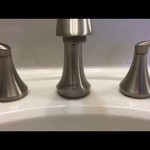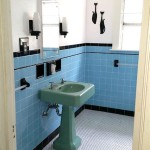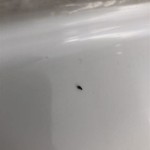Tackling a Bathroom Sink Pipe Clog: A Step-by-Step Guide
A clogged bathroom sink drain can be a frustrating inconvenience, disrupting daily routines and leaving a lingering foul odor. The culprit behind this blockage can vary, ranging from hair and soap residue to food particles and even foreign objects. Fortunately, addressing a clogged bathroom sink pipe is often achievable with simple tools and techniques. This guide will provide a detailed breakdown of how to identify the source of the clog and implement effective solutions to restore free-flowing water.
Identifying the Source of the Clog
Before embarking on any troubleshooting, it's crucial to understand the source of the blockage. Common culprits include:
- Hair and Soap Residue: These are the most frequent culprits in bathroom sink clogs. Hair, along with soap scum, can accumulate over time, forming a dense barrier that obstructs water flow.
- Food Particles: While less common in bathroom sinks, food particles, especially if the sink is used to rinse dishes, can contribute to clogs.
- Foreign Objects: Jewelry, small toys, or other items accidentally dropped down the drain can become lodged and cause significant obstruction.
To pinpoint the precise location of the clog, observe the water drainage pattern. If the water drains slowly but eventually disappears, the clog might be further down the pipe. However, if the water simply sits in the sink without any drainage, the obstruction is likely near the drain opening.
Effective Solutions for Clogged Bathroom Sink Pipes
Once the source of the clog is identified, you can employ various methods to clear the obstruction. These techniques range from simple DIY solutions to more advanced approaches for stubborn clogs:
1. Plunger Method
A plunger is the go-to tool for many basic clogs. Here's how to use it effectively:
- Prepare the Plunger: Fill the sink with hot water to about halfway. Ensure the plunger's cup fully covers the drain opening.
- Create a Seal: Press the plunger firmly against the drain opening to create a tight seal. Avoid any gaps or air pockets.
- Pump Up and Down: In a rhythmic motion, pump the plunger vigorously up and down. Aim for strong, consistent pressure, not just gentle movements.
- Test and Repeat: After several pumps, check if the water drains freely. If the clog persists, continue plunging for a few more minutes, then try again.
2. Chemical Drain Cleaner
Chemical drain cleaners are commercially available products designed to dissolve clogs. However, it's crucial to use these with caution, as they can be harsh on pipes and pose potential health risks:
- Read Instructions Carefully: Always consult the product label for specific instructions and safety precautions. Wear protective gloves and eye protection.
- Pour the Cleaner: Follow the recommended amount and pour the cleaner directly into the drain. Avoid diluting it with water unless instructed otherwise.
- Allow Time to Work: Let the cleaner sit for the specified duration, typically 30 minutes to an hour. Avoid using the sink during this time.
- Flush with Water: After the waiting period, flush the drain with hot water for several minutes to remove any residue.
While chemical drain cleaners can be effective, they should be used sparingly. Frequent use can damage pipes and might not address the underlying cause of clogs.
3. DIY Drain Snake
For more persistent clogs or those caused by large objects, a drain snake can be a valuable tool. This flexible, coiled cable is designed to reach deep into the drainpipe and break up clogs. You can find drain snakes at most hardware stores:
- Insert the Snake: Insert the drain snake's tip into the drain opening and slowly feed it into the pipe.
- Rotate and Push: Rotate the handle while applying gentle pressure to push the snake deeper into the pipe. The movement should create a twisting action that breaks apart the clog.
- Remove the Clog: Once you feel resistance or encounter the clog, slowly pull the snake back, bringing any debris trapped in the cable with it.
- Flush with Water: Flush the drain with hot water to clear any remaining debris.
4. Professional Plumber
If all else fails, it's time to call a professional plumber. This is particularly crucial when dealing with stubborn clogs that persist despite DIY efforts or when you suspect damage to the drainpipe. A plumber has the expertise and tools to diagnose the problem accurately and provide a lasting solution.
Preventing Future Bathroom Sink Clogs
Preventing future clogs is essential for hassle-free bathroom sink usage. Here are some proactive steps:
- Hair Catcher: Install a hair catcher in the drain opening. This simple device traps hair before it can reach the pipe and cause a clog.
- Regular Cleaning: Clean the drain regularly using a drain cleaner or a combination of baking soda and vinegar. This helps remove buildup before it becomes a significant problem.
- Avoid Food Waste: Do not dispose of food waste down the bathroom sink. This can lead to clogs, especially if the sink is used for rinsing dishes.
- Be Mindful of Items: Be cautious about items that accidentally fall into the sink. Jewelry, small toys, or other foreign objects can easily obstruct the drain.
By following these preventative practices, you can minimize the risk of future bathroom sink clogs and enjoy a smooth-flowing sink for years to come.

5 Natural Ways To Unclog A Bathroom Sink Hiller How

How To Unclog A Bathroom Sink Hana S Happy Home

Bathroom Sink Clog Billy The Sunshine Plumber

Why Is Your Bathroom Sink Clogged Order A Plumber

How To Clear Clogged Drains Diy

How To Unclog A Bathroom Sink Hana S Happy Home

How To Unclog A Slow Running Bathroom Sink Drain 10 Options

How To Keep Drains From Clogging Bathroom Sink Drain Stopper Diy

Why Does My Bathroom Sink Clog

How To Unclog A Slow Running Bathroom Sink Drain 10 Options
Related Posts
